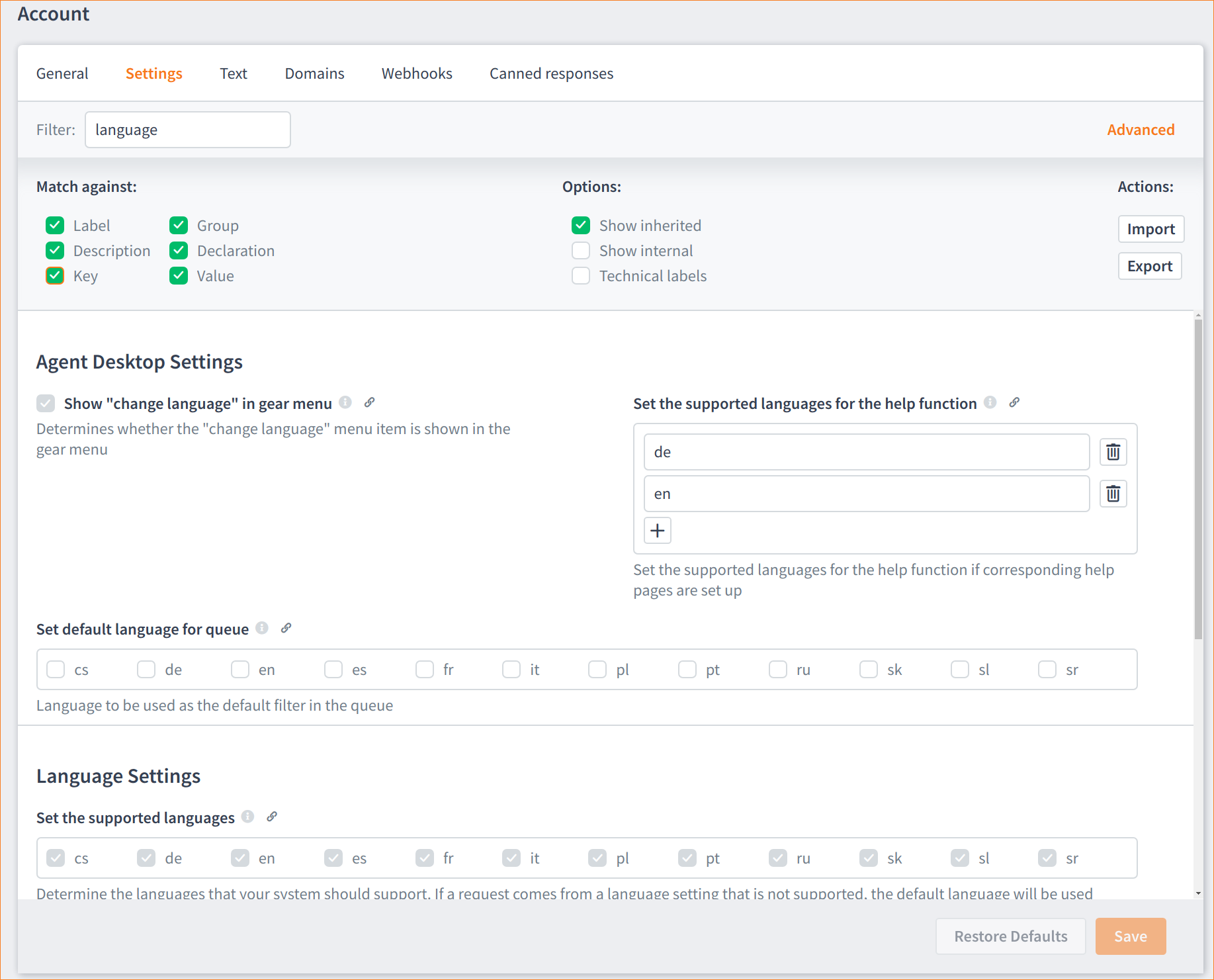|
This document describes version 5 of Unblu. If you’re using the latest major version of Unblu, go to the documentation of the latest version. The support period for version 5 ended on 22 November 2021. We no longer provide support or updates for this version. You should upgrade to the latest version of Unblu. |
Selecting the Language
There are a number of ways to set the language(s). The simplest way to configure the languages is to use the Agent Desk:
-
From the main menu in the Agent Desk select Settings then select the Advanced button.
-
Ensure that all of the check boxes available to your role are selected. (Select the Technical Labels box if you want to see the actual values.)
-
Enter the word language into the Filter field. All available (to your role) language-related configuration settings display.

-
Make your changes, click the Save button then log out and back in to apply the changes.
Setting the Language / Locale
The locale describes the regional settings for a piece of software, such as a website, or Unblu. The most noticeable aspect of the locale is the language in which the user interface is displayed, but the locale can contain other regional aspects (such as date formats, number formats, and so on).
If your website has only one locale, you can set that locale for Unblu in the configuration. This ensures that the website and Unblu use the same locale (that is, the same language and the same (other) regional settings).
If your website supports multiple locales, then you have to tell Unblu which locale to use.
Using an Attribute
A very straightforward way of telling Unblu which locale to use is by using the default HTML lang attribute in the <html> tag, as follows:
<html lang="en">
IMPORTANT: Although according to the HTML specification, the lang attribute can be set on any tag, Unblu only checks the HTML tag to pick up the language.
Unblu supports either language code or language-region code as defined in http://www.ietf.org/rfc/bcp/bcp47.txt section 2.2.1 (Language), section 2.2.4 (Region) and Appendix A (examples for language-region). If you do not want to set the language for the entire page, you can tell Unblu explicitly what locale to use. To do so, add the (custom) attribute unblu_locale to the HTML tag as follows:
<html unblu_locale="en-US">
(Most content management systems will let you add this attribute to all pages with little effort.)
Using a JavaScript Function Call
You can also use a JavaScript function call to set the locale, as follows:
unblu.setLocale(language-code)
Note that you have to call the function after the snippet, but before the page is rendered. If at all possible, we recommend that you place the call immediately after the snippet.